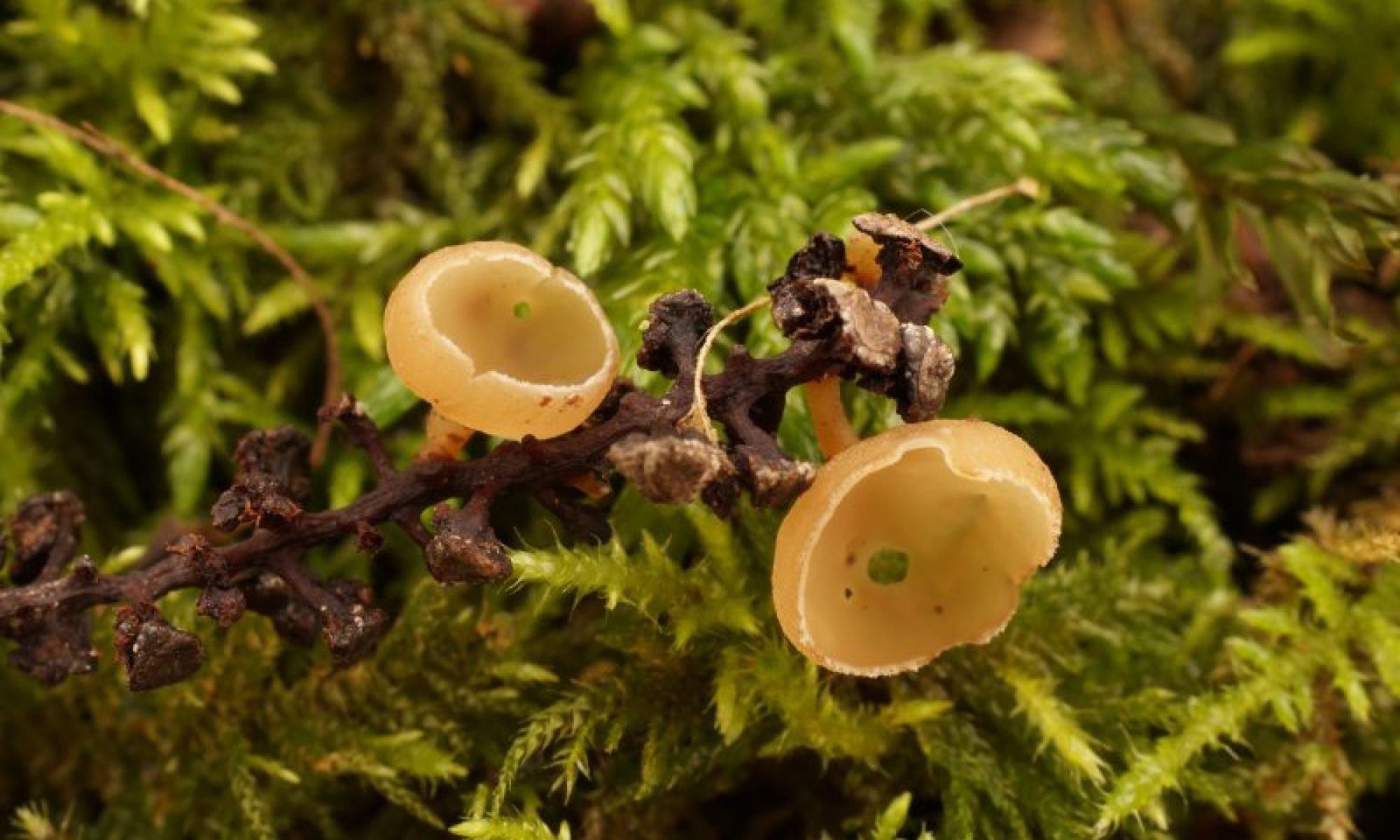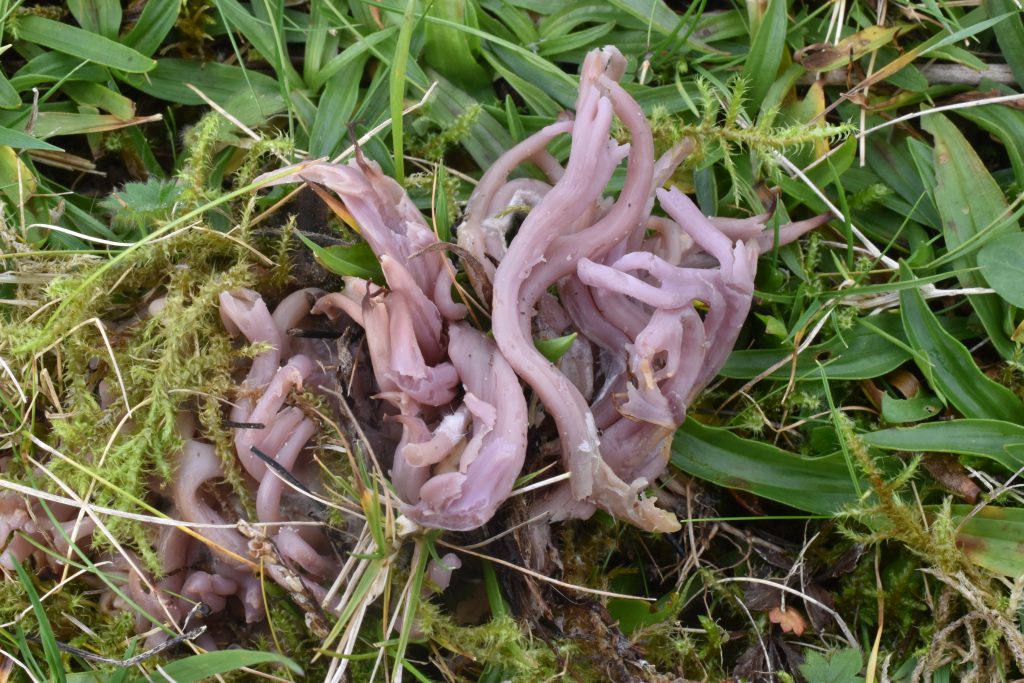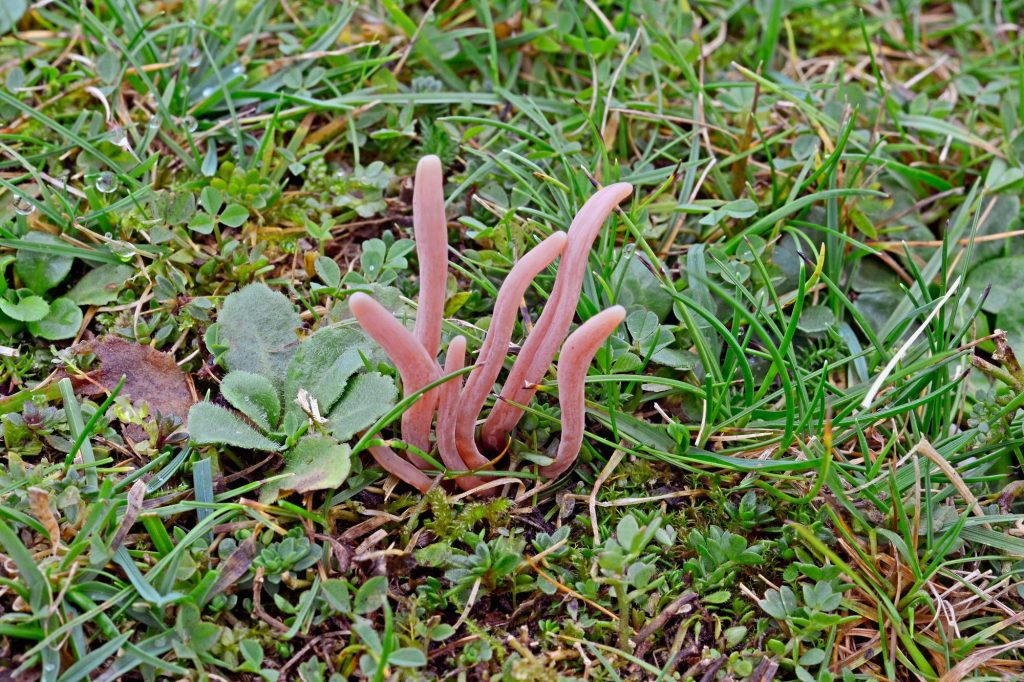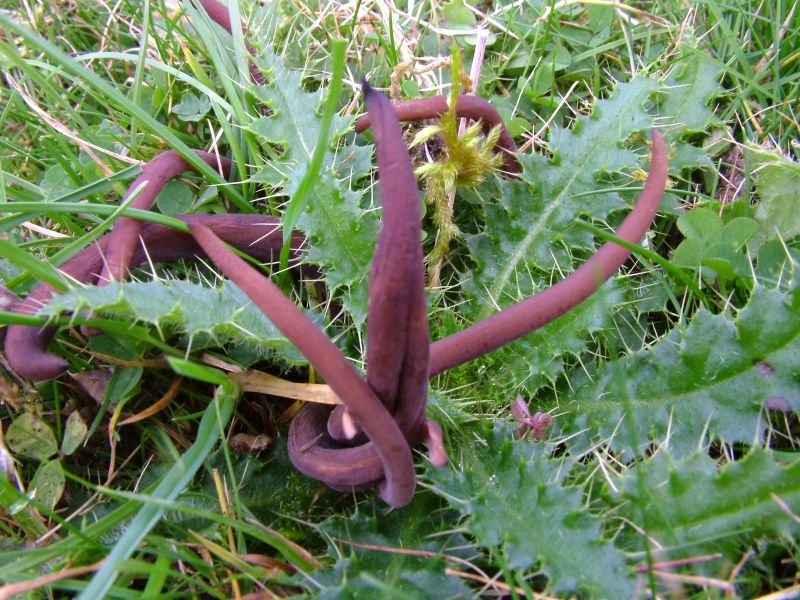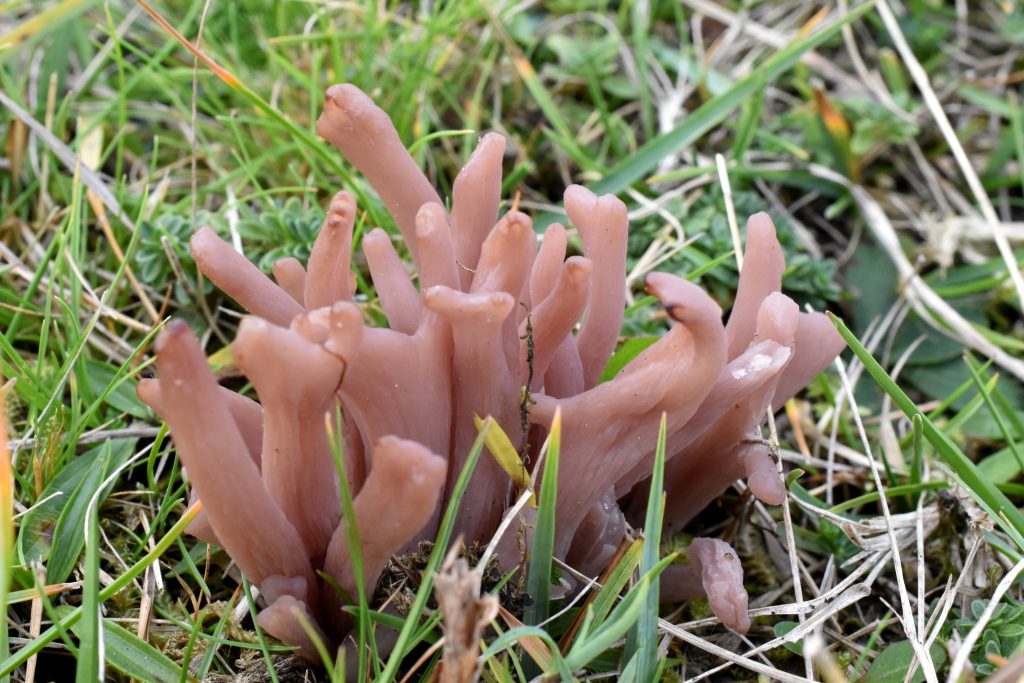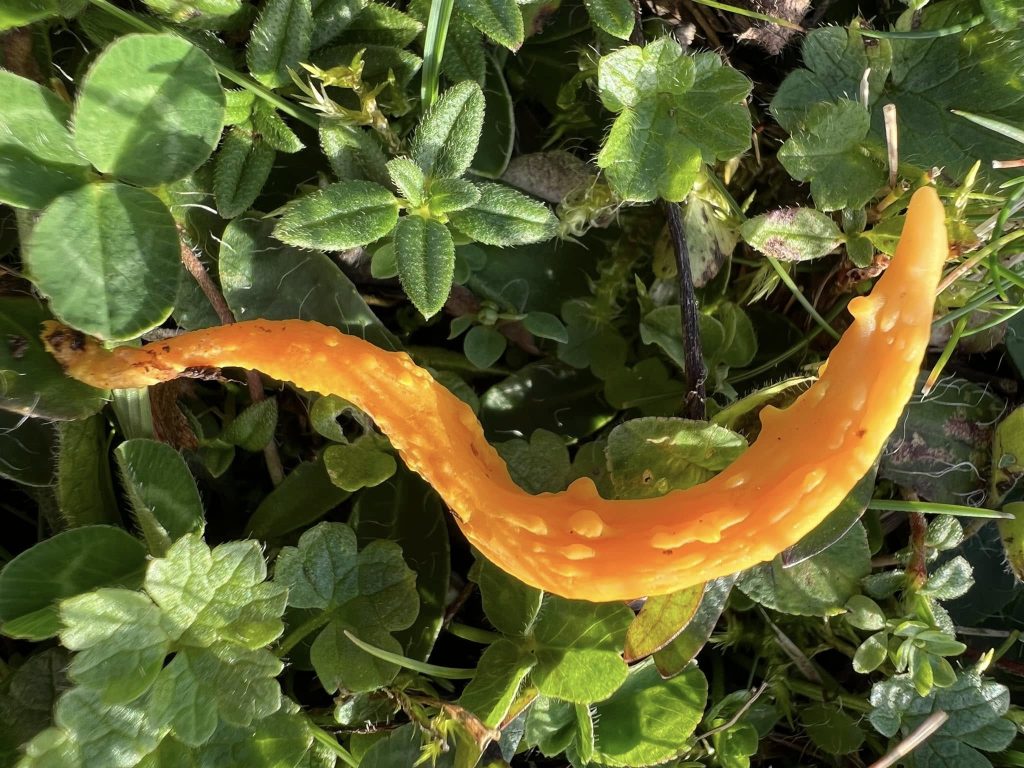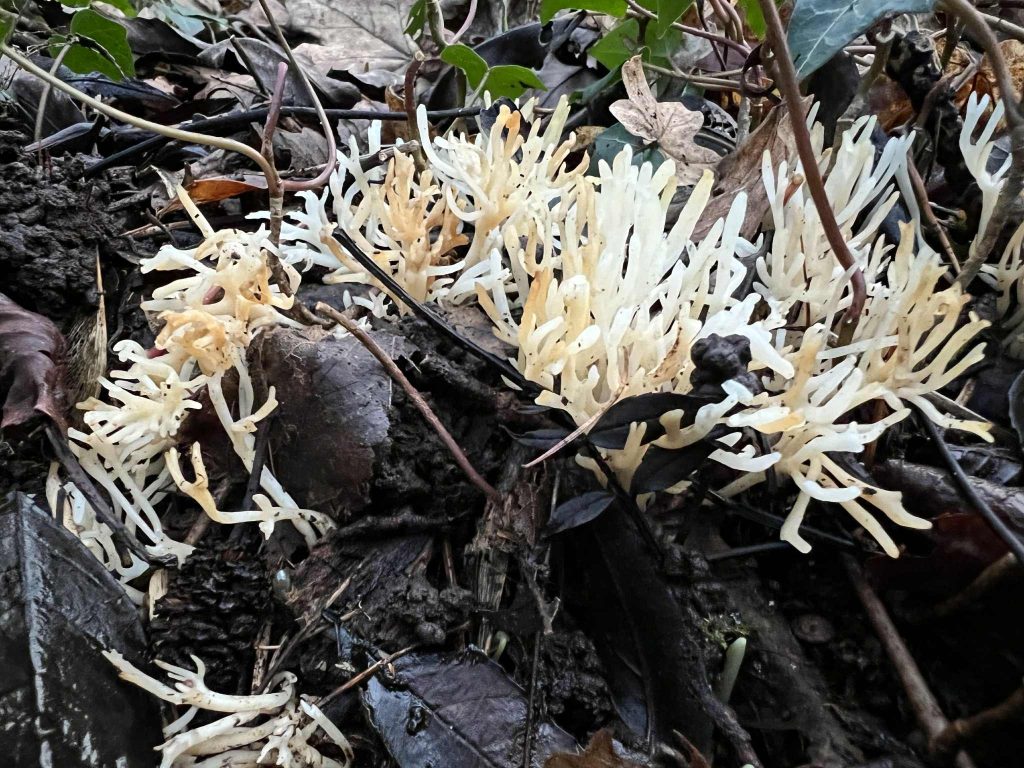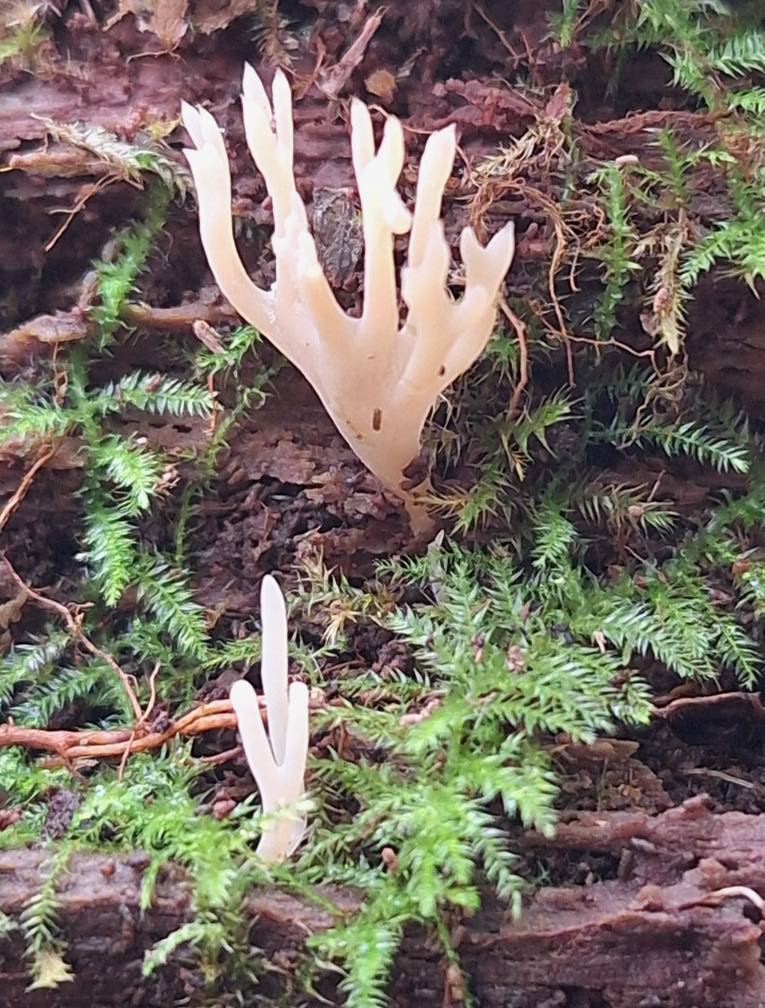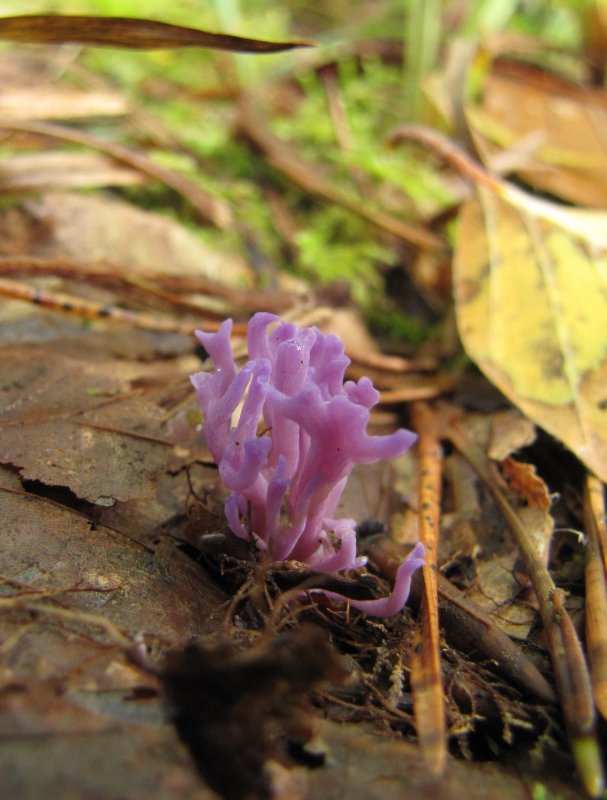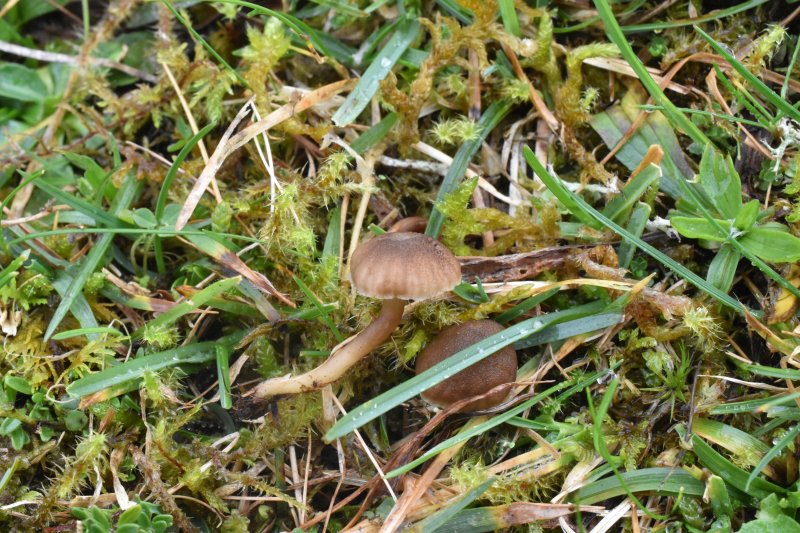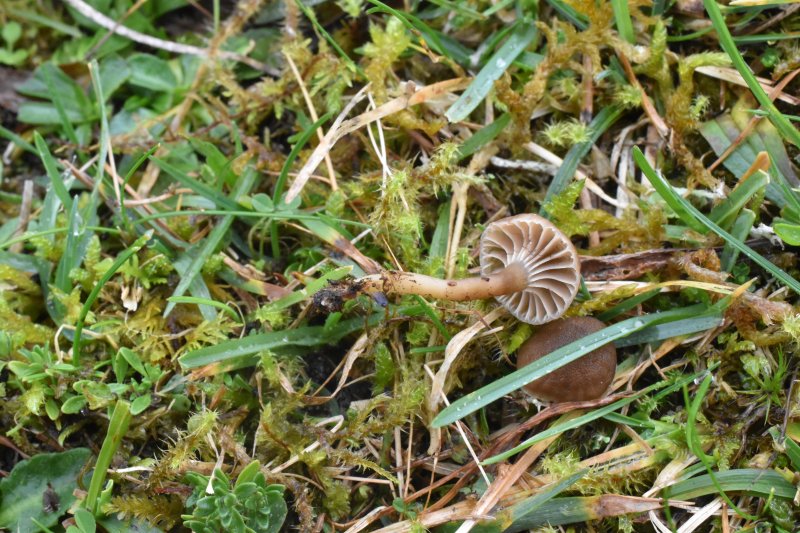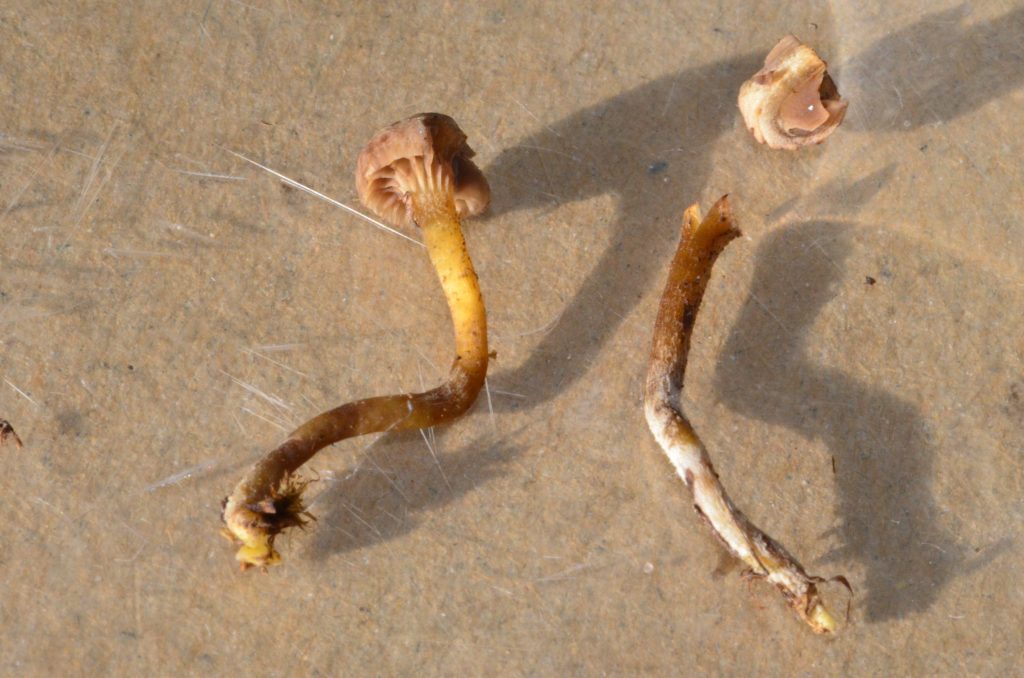The C group of grassland fungi stands for Clavariaceae. Traditionally this has the group of the Fairy Clubs but recent molecular work has complicated things. A number of genera of gilled fungi are now members of the Clavariaceae so there may be some surprises in this selection. The new Clavarioid genera are Camarophyllopsis, Hodophilus and Lamelloclavaria. Soil eDNA work suggests there are many more Clavarioids present than we currently know about so this is a group that could be change significantly in the future so any odd looking species should be collected and dried. The species or collections of species that we would particularly like specimens of are:
Camarophyllopsis atrovelutina
One of the new “gilled” Clavarioids, this species is found commonly in eDNA samples but only very occasionally as fruiting bodies. There are no Irish records.
Camarophyllopsis schulzeri or Matt Fanvault
Also used to be in the “D” group, it has a dark brown cap and stipe with adnate to very slightly decurrent gills. The spores are noticeably small and the cap cuticle is quite different to a waxcap being a trichoderm with enlarged end cells. Only known from Knocklayd, Colebrook church in Fermanagh and Seskinore in Northern Ireland. For photos, see iNaturalist.
Any Violet Coral
The species that we have called the Violet Coral or Clavaria zollingeri is now known to be one of two different species, Clavaria amethystina or Clavaria violaceopulchra. The original type specimen of Clavaria zollingeri was re-examined and was discovered to have clamps which means it is a Clavulinopsis, not a Clavaria. Further more, as the type came from Indonesia, when it was sequenced, it was discovered to be different to the European collections and there were two different species in Europe. The difference comes down to spore shape with C. amethystina having ellipsoid spores which C. violaceopulchra has subglobose spores. It demonstrates the importance of keeping specimens. I have looked at two Irish specimens and they are both C. amethystina. C. violaceopulchra has been found in GB so I would expect it to be found in Ireland but that has not yet happened.
Clavaria amethystina from Divis Mountain
Any Pink club
The pink clubs are usually single clubs that maybe clumped i.e. a lot of single clubs growing together or more usually singly. We have very few records of pink clubs from Ireland with Clavaria incarnata only having three records. However there are now other similar species that are difficult to separate and these records may be misidentified. We have one record of Clavaria messapica from Fair Head in 2022 and this very curious find came from an NIFG foray at Knockdhu in 2024. The sequence comes out not near anything else. Mo Rainey had a find of one at Ballyquintin Point this year. So in reality any pink club needs to be collected and sequenced. Emma Williams in Wales has noticed that pink clubs are often found near to Meadow Waxcaps but being small, they need carefully searched for.
Mystery pink club from Knockdhu. Photo by Roy Anderson
Any brown or grey clubs, single or clumped
There are again a number of brown or grey clubs, some single, some clumped but there are very few Irish records of these. There is a single record of Clavaria atroumbrina from a BMS foray in Fermanagh. Any brown club is a rarity and should be collected and dried.
Clavaria atroumbrina (photo taken in Wales)
Clavaria calabrica
We had the first British record of this species from Little Deer Park near Glenarm in 2022. It is like a Smoky Spindles, Clavaria fumosa, but with branching tips. There was one post from last year from Shankill graveyard in Lurgan that looked very like this. Any specimen will need sequenced.
This could be a tricky one to recognise as it is quite similar to the other yellow unbranched clubs. Under the microscope, it is recognised by very distinctive triangular spores. I am not sure if the lumpy nature of the specimen in the photograph below is typical.
Clavulinopsis trigonospora from England. Photo by Simon Harding
Any white sparsely branched coral
For a long time, we called the densely branched white corals Ramariopsis kunzei but this has turned out to be a different species, Ramariopsis robusta. R. kunzei s. str. is a thinner smaller species with less branches. We don’t know if we actually have it in Ireland so it would be good to check. However there are other sparsely branched white corals e.g. R. subtilis. This can be separated by spore size but that needs to be measured.
Ramariopsis kunzei s. str. from England. Photo by Simon Harding
An unidentified white coral at Mount Stewart. Photo by Mo Rainey
Ramariopsis pulchella
Possibly more typically a woodland species than from grassland, it was found at Linford Barrows so may be found in grassland as well. It is like the Violet Coral but is very sparsely branched. Under the microscope, the spores are small and warty.
Ramariopsis pulchella. Photo by Debbie Nelson
Any Hodophilus
This is a tricky little group that is now known to have a lot more species than originally thought. They are small, often with thick decurrent gills. They can have drab brown colours, sometimes a very yellow stipe and sometimes a spotted stipe. Some can smell very strongly. All need carefully checked so if you see any, please keep. We had some special ones recently – the first British record of Hodophilus phaeophyllus from near Glenarm and a couple of records of H. anatinus from Cloughey Dunes and the Marlbank. Then on a NIFG foray at Divis, a small specimen with a yellow stipe was found. This is now away in Slovakia being described as a new species!
Hodophilus anatinus
The undescribed Hodophilus from Divis
